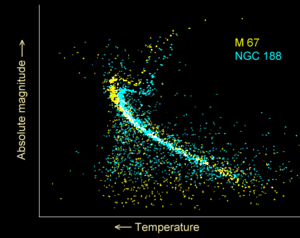The Sun is the Solar System’s parent star. Its large mass gives it an interior density high enough to sustain nuclear fusion, which releases enormous amounts of energy, mostly radiated into space as electromagnetic radiation such as visible light.
The Sun is classified as a moderately large yellow dwarf. Stars are classified by the Hertzsprung-Russell diagram which plots the brightness of stars against their surface temperatures. Generally, hotter stars are brighter. Stars following this pattern are said to be on the main sequence; the Sun lies right in the middle of it. 
The Sun is a population I star; it was born in the later stages of the universe’s evolution. It contains more elements heavier than hydrogen and helium (“metals” in astronomical parlance) than older population II stars. Elements heavier than hydrogen and helium were formed in the cores of ancient and exploding stars, so the first generation of stars had to die before the universe could be enriched with these atoms. The oldest stars contain few metals, while stars born later have more. This high metallicity is thought to have been crucial to the Sun’s developing a planetary system, because planets form from accretion of metals.





